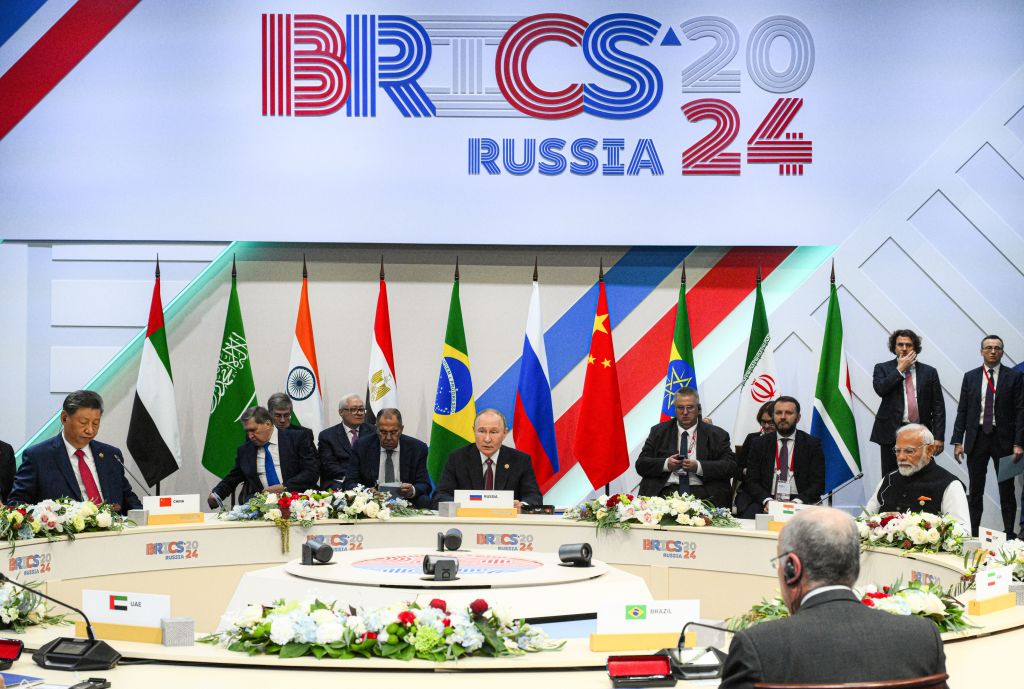Investors should buy into the nuclear power renaissance – Merryn Somerset Webb
A new golden age for nuclear power is upon us, says Merryn Somerset Webb


There is a lot going on this year. So much so that you might not have noticed one of the biggest game-changers out there: the nuclear-power renaissance. Until recently, most net-zero absolutists were convinced their dream could be achieved with renewables. Spend enough on wind and solar, and in a decade or two, you would have a “clean” grid delivering cheap electricity everywhere. No dirty fossil fuels and no dangerous nuclear plants either.
It hasn’t worked – and it is increasingly clear that it won’t (intermittency, distance, expense). That’s a problem when, thanks to electric cars, heat pumps and, crucially, artificial intelligence (AI), demand for electricity is rising very fast indeed. Demand from data centres is expected to double or even triple by 2030. Note that an AI query uses ten times the energy of an old-fashioned Google search. Today data centres use 2%-3% of total US electricity. By 2030 that is forecast to be near 9%. Overall global power demand is expected to grow by 3%-4% over the next five years – three times faster than it has over the last ten.
The good news is that there is another solution – and a really good one: nuclear. For the past few decades we have shied away from it on the basis that it’s dangerous. Turns out it isn’t. The accidents at Three Mile Island (1979) and Chernobyl (1986) left a legacy of what Dr Tim Gregory, author of Going Nuclear: How the Atom Will Save the World, calls “radiophobia”. But no one died at Three Mile Island (America’s biggest ever nuclear disaster); and the death toll at Chernobyl “likely falls in the region of a few hundred”, Gregory told The Telegraph. Worry less about radiation, says Gregory, and more about air pollution – something that kills millions of people and which nuclear power can make go away. But being clean is only the start of the brilliance of nuclear. It is also constant (something our grid needs – ask the Spanish); reliable, low emission and potentially cost-effective (this is a choice for regulators and planners). Build it out in the form of small nuclear reactors (SMRs) and you can construct modular units in factories and deploy them reasonably quickly and cheaply wherever energy is needed. If that all sounds good it is because it is – something pretty much everyone now seems to grasp.
MoneyWeek
Subscribe to MoneyWeek today and get your first six magazine issues absolutely FREE

Sign up to Money Morning
Don't miss the latest investment and personal finances news, market analysis, plus money-saving tips with our free twice-daily newsletter
Don't miss the latest investment and personal finances news, market analysis, plus money-saving tips with our free twice-daily newsletter
The world is getting the message
In May, Donald Trump signed four executive orders with a view to quadrupling US nuclear capacity by 2050. He is after new-builds, restarts of retired plants and fast capacity upgrades of existing reactors. At the same time, he expects US uranium supply chains to be rebuilt – the US nuclear industry is currently more than 80% dependent on imports – with too much coming from hostile states. US tech firms are on board: the likes of Google, Microsoft and Meta have all signed their own nuclear-power purchase agreements with utility companies. China is all over nuclear, too. Since 2010 it has installed some 50% of new capacity, is nearing the US in terms of overall capacity and is a world leader in securing constantly cheaper reactor technology, to say nothing of speed of installation. Europe is backing away from its nuclear phase-outs as fast as possible.
You can see the shift in global institutions, too: the Asian Development Bank announced this week that it is considering lifting its funding ban on nuclear projects. The World Bank has already done so. Even in the UK, nuclear is once again on the go. Energy secretary Ed Miliband is committing to both new plants in the UK and to a “new golden age of nuclear for Britain”.
Some worries for the long term
The rate of change is accelerating. Nuclear delivers roughly 10% of global electricity, down from 17% in the mid-1980s, but there are still 441 plants in operation globally, with 65 more under construction and another 400-plus planned. Capacity should at least triple by 2050 – at least, that was the pledge at the COP20 climate summit. You’ll be wondering if there is enough uranium for all this. In the long term, there is. According to Gregory, the known reserves of uranium and thorium (which could also be used in the longer term) plus recyclable fuel could keep us all going for 900 years, while that dissolved in the ocean could do us for another quarter of a million. More than enough to tide us over. But it’s a different story in the short term. At the moment things may look fine, according to investment bank Jefferies. Newly mined supply is forecast to come in a bit below reactor requirements this year. For now that’s not a problem – the gap is plugged by secondary supplies (inventory drawdowns and recycling). Soon it will be a problem: these secondary supplies will fall short and the market will “face a structural reset by 2028”.
Think of it as a new pricing phase, says Nick Lawson of advisory firm Ocean Wall. The government legislature phase is complete. But next comes “buyer fear” – when everyone knows everyone will need uranium, everyone knows there isn’t quite enough and everyone also knows everyone else isn’t price-sensitive (uranium is a tiny part of the cost of generating nuclear energy). This is a worry for the long term, as it takes a while to build plants, but there’s a reason prices rose 5.5% in May and the uranium miners by rather more.
There are plenty of ways into the uranium market. In Canada there is Sprott Physical Uranium Trust (Toronto: U.U) – which holds exactly what it says. In the UK, you can look at a couple of trusts: Yellowcake (Aim: YCA) and Geiger Counter (LSE: GCL). Yellowcake holds physical uranium oxide concentrate, while Geiger Counter invests in exploration, development and production companies in the uranium sector.
Merryn hosts the Merryn Talks Money podcast at Bloomberg.com.
This article was first published in MoneyWeek's magazine. Enjoy exclusive early access to news, opinion and analysis from our team of financial experts with a MoneyWeek subscription.
Get the latest financial news, insights and expert analysis from our award-winning MoneyWeek team, to help you understand what really matters when it comes to your finances.
Merryn Somerset Webb started her career in Tokyo at public broadcaster NHK before becoming a Japanese equity broker at what was then Warburgs. She went on to work at SBC and UBS without moving from her desk in Kamiyacho (it was the age of mergers).
After five years in Japan she returned to work in the UK at Paribas. This soon became BNP Paribas. Again, no desk move was required. On leaving the City, Merryn helped The Week magazine with its City pages before becoming the launch editor of MoneyWeek in 2000 and taking on columns first in the Sunday Times and then in 2009 in the Financial Times
Twenty years on, MoneyWeek is the best-selling financial magazine in the UK. Merryn was its Editor in Chief until 2022. She is now a senior columnist at Bloomberg and host of the Merryn Talks Money podcast - but still writes for Moneyweek monthly.
Merryn is also is a non executive director of two investment trusts – BlackRock Throgmorton, and the Murray Income Investment Trust.
-
 MoneyWeek news quiz: How much can you win in Premium Bonds?
MoneyWeek news quiz: How much can you win in Premium Bonds?Quiz Premium Bonds, ChatGPT, and the start of the festive season all made headlines this week. How closely were you following the news?
-
 Salary sacrifice pensions cap: 3.3 million workers to be hit by contribution limits
Salary sacrifice pensions cap: 3.3 million workers to be hit by contribution limitsThe government has revealed further details of its controversial cap on pension contributions through salary sacrifice. Here is how the changes could affect you
-
 Canada will be a winner in this new era of deglobalisation and populism
Canada will be a winner in this new era of deglobalisation and populismGreg Eckel, portfolio manager at Canadian General Investments, selects three Canadian stocks
-
 More clouds gather over renewable energy trusts – is there any hope for the sector?
More clouds gather over renewable energy trusts – is there any hope for the sector?The outlook for renewable energy trusts has gone from bad to worse this year, with the industry being caught in a 'perfect storm'
-
 Why Scotland's proposed government bonds are a terrible investment
Why Scotland's proposed government bonds are a terrible investmentOpinion Politicians in Scotland pushing for “kilts” think it will strengthen the case for independence and boost financial credibility. It's more likely to backfire
-
 Investing in AI – the ultimate bubble
Investing in AI – the ultimate bubbleIs it “different this time”, or are we in the mother of all bubbles? The economics of AI should give investors pause for thought, says Dan McEvoy
-
 MoneyWeek experts pick the best investments for the next 25 years
MoneyWeek experts pick the best investments for the next 25 yearsMoneyWeek's experts predict the best investments for the next quarter-century. Tips range from defence and agriculture to Vietnam and Jardine Matheson
-
 What MoneyWeek has learnt in the last 25 years
What MoneyWeek has learnt in the last 25 yearsFinancial markets have suffered two huge bear markets and a pandemic since MoneyWeek launched. Alex Rankine reviews key trends and lessons from a turbulent time
-
 Investors need to get ready for an age of uncertainty and upheaval
Investors need to get ready for an age of uncertainty and upheavalTectonic geopolitical and economic shifts are underway. Investors need to consider a range of tools when positioning portfolios to accommodate these changes
-
 Investing in UK universities: how to spin research into profits
Investing in UK universities: how to spin research into profitsUK universities are a vital economic asset, but they are also Britain's 'equivalent of Gulf oil.' There are opportunities here for investors
